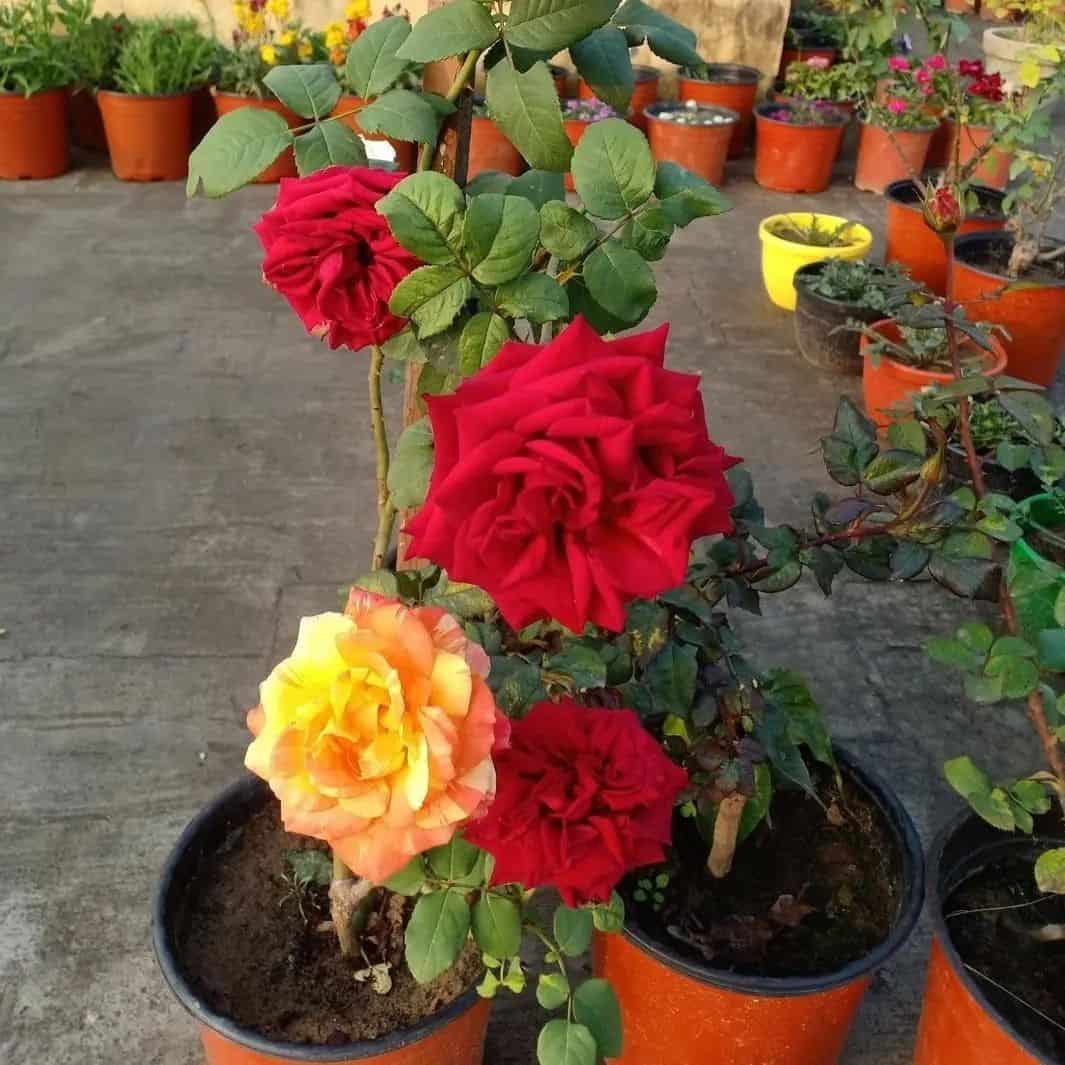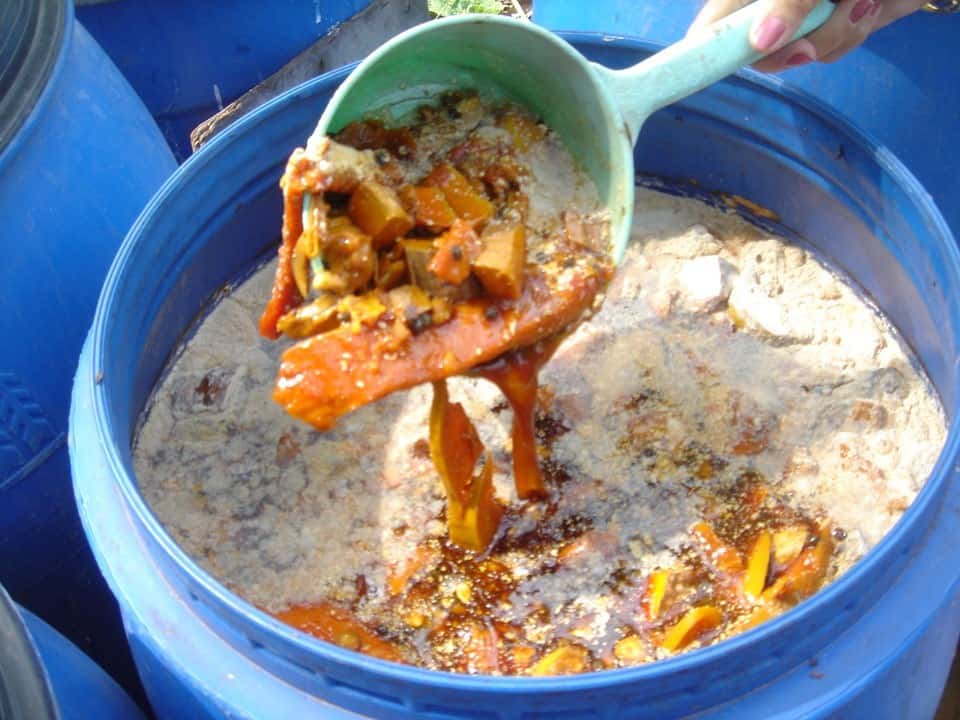Are you struggling to grow rich and fuller flowers despite using fertilizers on your plant? The chances are the soil lacks correct nutrients or is choked with minerals.
Read on to learn more about organic bloom boosters and how to make one at home.
Table of Contents Show
What is Bloom Booster & What Does it do to the Plants?
Bloom booster is a specially formulated fertilizer that provides additional nutrients to stimulate blooms in flowering plants.
If you are wondering, the bloom booster artificially increases metabolic activity and mineral uptake of any plant by utilizing two essential factors: biostimulants and organic transport enhancers.
| Biostimulants | Organic Transport Enchancers |
|---|---|
| They are microorganisms that stimulate natural processes to benefit nutrient uptake in plants. | They are Plant Growth Regulators (PGRs), not synthetic, that alter plants growth to your desired preference. |
| Humic acids, seaweed extracts, manure composting, and bacteria and fungi are biostimulants. | Auxin, cytokinin, gibberellins, abscisic acid are common organic transport enhancers. |
| They assist in combating the effects of environmental stresses. | They make essential nutrients easily available to flowering plants. |
Both biostimulants and organic transport enhancers are vital in increasing flower sizes, returning flowers and flowering density.
Remember, bloom boosters contain two macronutrients, phosphorus and potassium, and trace minerals like calcium, sulfur, and magnesium at different ratios appropriate for plants.

So, you must learn what bloom boosters to use and when to apply them to prevent mineral toxicity.
Many synthetic fertilizers guarantee a bloom boost, but they only give a quick result and poison the soil from continuous use.
Although they are fast-acting, continuous use will alter the microbial activity in the soil, reducing its quality.
Similarly, you should add a bloom booster as soon as the first bud appears to provide a quick nutrient boost and continue applying every week or two.
With continuous use throughout the growing seasons, your plant will retain rich blossoms without diminishing their quality.
Find out why your African violets are failing to bloom.
How to Make an Organic Bloom Booster?
Remember, organic bloom boosters are more slow-yielding than non-organic bloom boosters because they break down slowly in the growing medium, requiring significant microbial activity.
If you are willing to wait longer to witness healthy blossoms, the organic bloom booster is your best choice.
Here are a few DIY methods for preparing organic bloom booster at home.
Recipe #1: Fermented Fruit Juice
Fermented fruit juice, or FFJ, makes an effective homemade bloom booster using fruits mixed with sugar.
Naturally, fruits contain high phosphorus, potassium, calcium, magnesium, iron, and carbohydrates that act as bloom boosters.
Here is how to make FFJ at home.
Items Required
- 1 kg of sugary fruits; banana, papaya, cantaloupe, pumpkin, and mango
- 1 kg of brown sugar
- A large mixing bowl
- Two larger plastic containers for fermentation and storage
- A breathable mesh cloth
- A sieve
Step-by-Step instruction
- Cut fruits into small cubes (about 2 cm) and mash them thoroughly into the mixing bowl.
- Add an equal amount of brown sugar, mix them gently, and leave them for a few minutes.
- Pour the mixture into a clean plastic container to about 2/3 capacity to encourage fermentation.

- Cover the container with a breathable mesh in a dark and dry place at a mild temperature (50°F) for 7-10 days.
- Extract the FFJ by slowly pouring the mushy solution through a sieve and collecting it in a new container.
- Once the FFJ is ready, you can store it in the fridge. Apply it to your plants, or add an equal amount of brown sugar for long-term storage.
How to Apply
- Mix 1ml FFJ with 500ml water (1:500) and apply directly over the soil.
- Continue using it every week until the flowers retain their full shape.
- Apply the fertilizer to the soil and avoid wetting the foliage and stems.
Recipe #2: Homemade P & K Mix
Another effective yet quick method to creating bloom booster includes mixing soluble potash and monopotassium phosphate with water in a 2:1 ratio.
You can use it immediately on your plants upon creation.
Items Required
- Soluble potash, 0-0-60
- Monopotassium phosphate, 0-52-34
- Distilled water
- A small container
- A ladle or spoon
For 1 Liter Solution
- Pour one liter of distilled water into a clean container.
- Pour 91.8g of soluble potash into the water and stir it well using a ladle or spoon.
- Next, pour 78.2g of monopotassium phosphate and stir the entire solution again.
For 2 Liter Solution
- Pour two liters of distilled water into a clean container.
- Pour 183.6g of soluble potash into the water and stir it well using a ladle.
- Next, pour 156.4 of monopotassium phosphate and stir the entire solution again.
How to Apply
- Apply the solution directly onto the soil, like fertilizer, and water the soil thoroughly afterward.
- Otherwise, mix with a soluble fertilizer and apply directly onto the soil.
- Alternatively, store the solution in a cool dark place and shake well before applying.
Best Organic Bloom Booster
Commercial bloom boosters are easy to find and use, especially when you are not up for dirtying your hand or home-making DIY bloom boosters.
Always remember to pick certified organic bloom boosters when buying commercial products and timings to prevent the risk of damage.
Here is a short list of the best organic bloom boosters.
| Product | Specification |
|---|---|
| Pro Bloom (TerraAquatica) | 1. Pro organic bloom booster from Terra Aquatica is forumlated with biostimulants and minerals that increases bloom by 20%. 2. Add 2 ml in 10 liter water or two drops per litre of water. |
| Espoma Organic Orchid Bloom Booster | 1. Espma organic orchid is a concentrated fertilizer and bloom booster ideal for orchids and bromeliads. 2. Add ½ cap of plant food per quart of water before applying. |
| Voodoo Juice | 1. It features four strains of bacilli that stimulates root growth. 2. It supports mycorrhizal and rhizobial symbiosis. 3. Makes inorganic phosphates more soluble. |
| Miracle Gro Garden Pro Bloom Booster | 1. It boasts fertilizer NPK 10-52-10. 2. It is appropriate for all kinds of blooming plants. 3. Apply the diluted solution every 2 weeks in the growing season. |
| Jack's Classic Blossom Booster Water Soluble | 1. Water soluble plant food with NPK 10-30-20, high potassium and phosphorus boost. 2. Works with both indoor and outdoor plants. 3. Mix with water to dilute the solution before applying. |
Learn the reblooming tricks for Irises, Kalanchoe, Pink Jasmine, Daffodil, Basil, Spider Plants, Elephant Ear, Schefflera, Calla Lily, Snake Plant, Kalanchoe, etc.
From Editorial Team
A bloom booster can be a nice touch to your flowering plants to attain richer and fuller blossoms.
However, applying bloom booster alone would not flourish the plant’s health unless you provide optimal care and regular plant food.
Follow this guide or ask your fellow growers to experiment with different brands of bloom boosters to get the best results.
